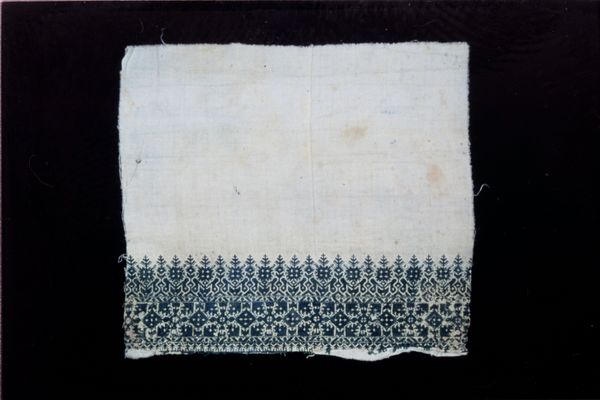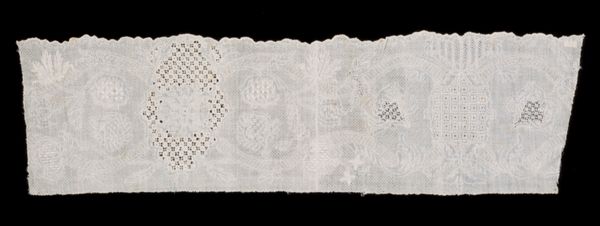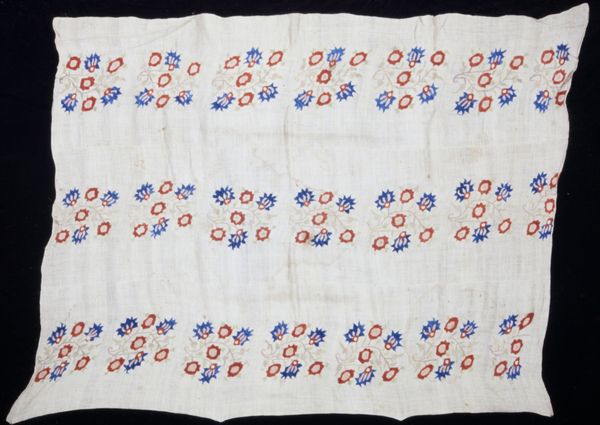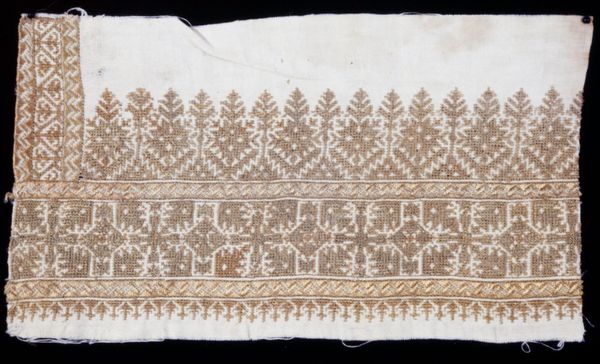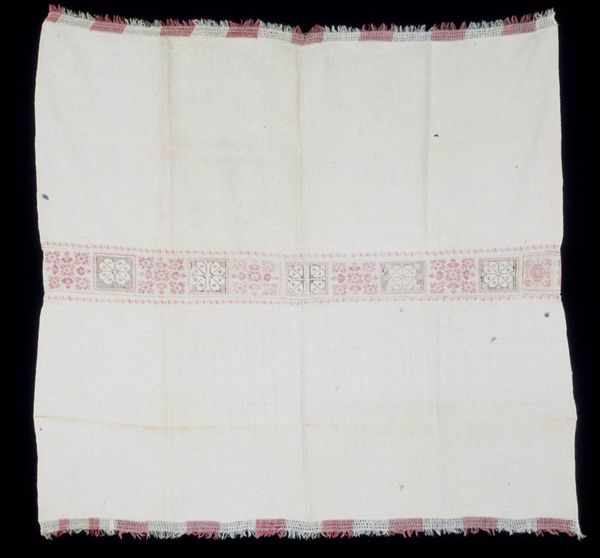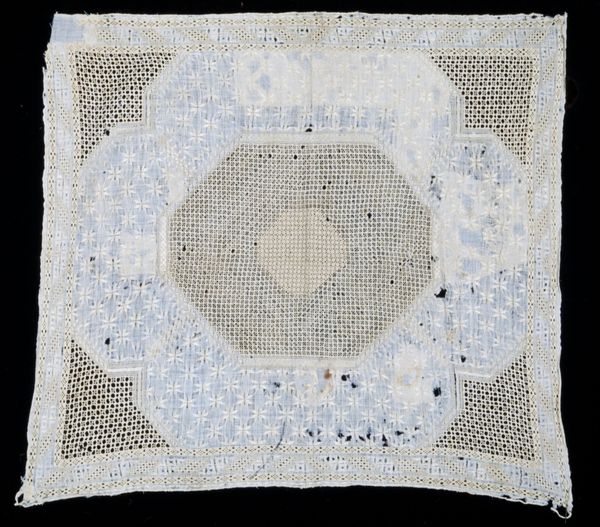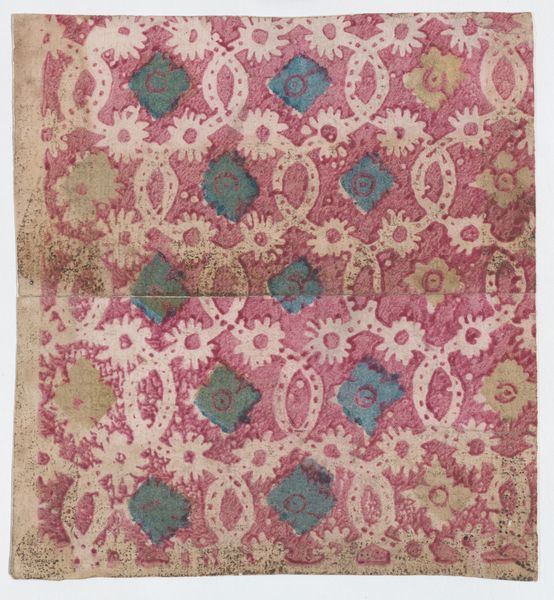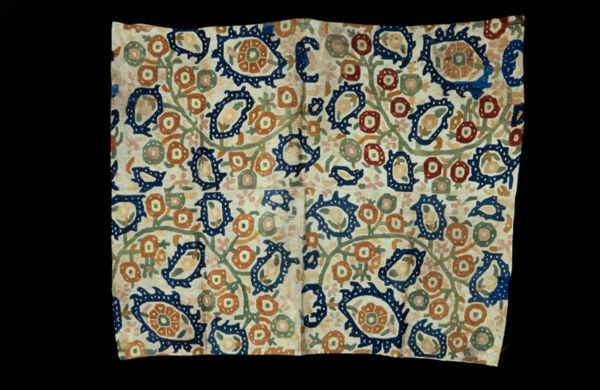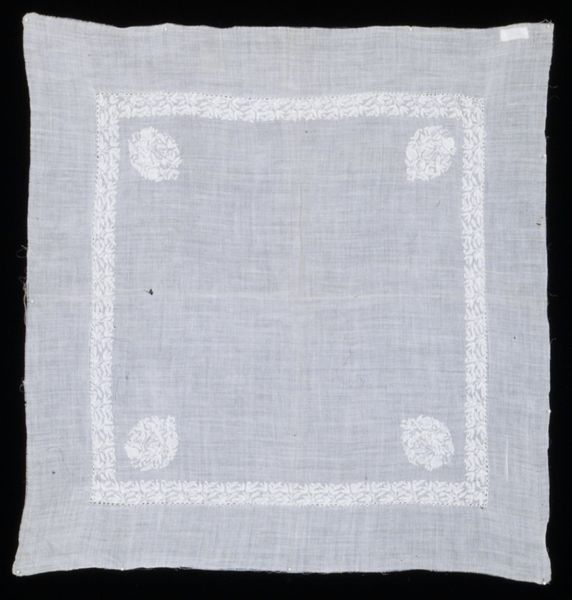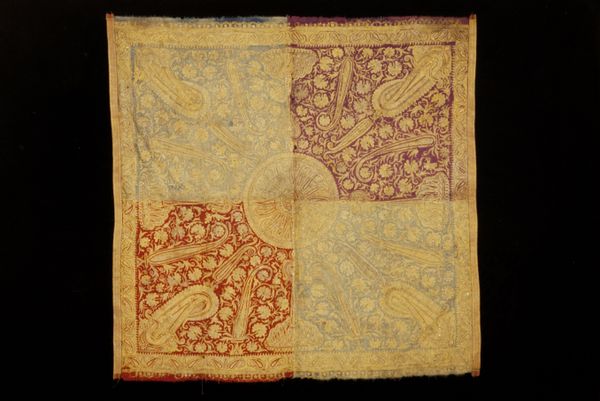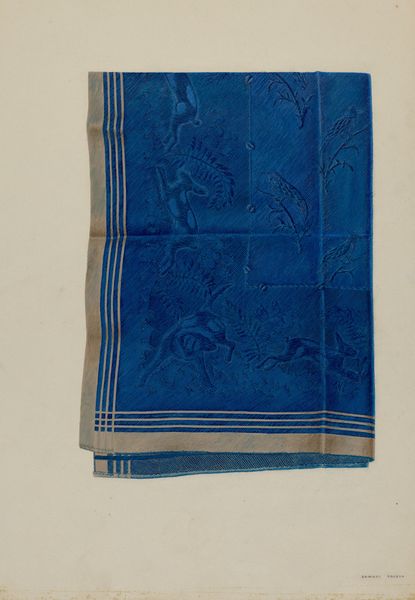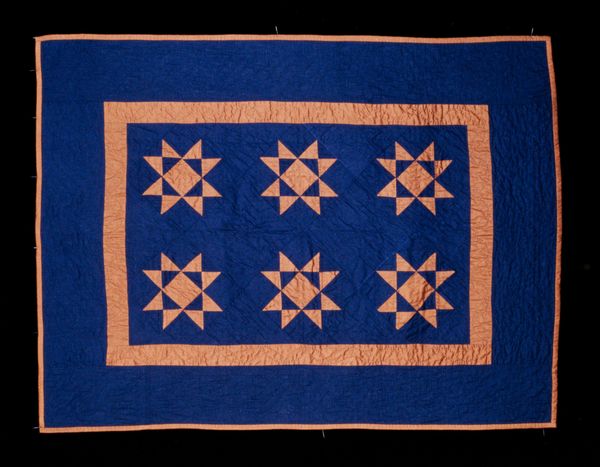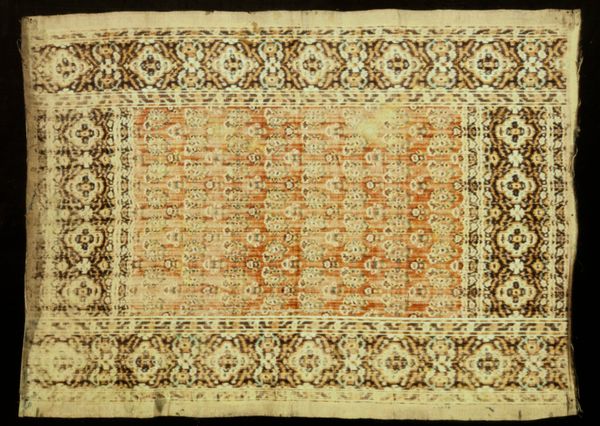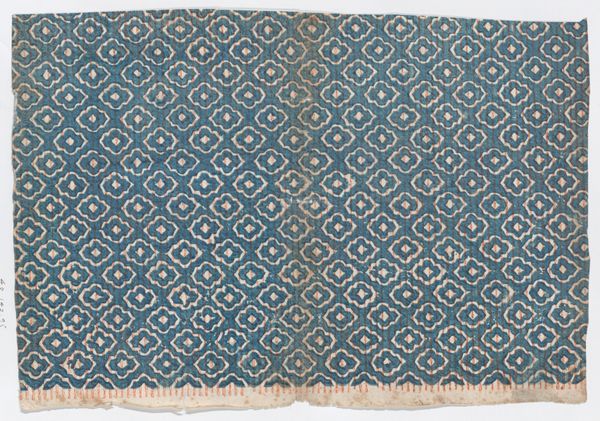
silk, textile
#
silk
#
pattern
#
textile
#
decorative-art
Dimensions: 45 x 44 1/2 in. (114.3 x 113 cm)
Copyright: Public Domain
Editor: We’re looking at an anonymous silk textile called “Cover,” likely from the 19th century. The faded blues and creams of the pattern give it such a delicate, almost ghostly feel. What historical narratives do you see woven into this piece? Curator: That's a great initial observation. The fragility, both perceived and literal, raises questions about its intended use and audience. As historians, we should examine its social role: was it for display, for functional purposes, or did it hold ritual significance? What kind of statement does the repeated pattern of floral motifs, which seems central to its decorative intention, mean to convey? How would this silk cover participate in the 19th century socio-cultural milieu, perhaps of Central Asia, given the textile tradition there? Editor: It’s interesting to think about its purpose influencing its value and display. Does the anonymity of the artist shift the focus of our analysis? Curator: Absolutely. Anonymity complicates but also liberates our interpretation. Without a known authorial intent, the cultural context takes centre stage. We begin to ask what production networks enabled such textile art to be created and circulated. How might it have served in defining social status or economic power? The condition also has much to say: Is the damage a mark of being used in everyday life, therefore being "owned" by ordinary folks? Editor: So, seeing its wear and tear gives us more of an insight into its life and what purposes it served. Thanks, that really does open up new ways of appreciating it. Curator: Indeed. It invites us to consider the public role of art beyond its aesthetic value, viewing it as a record of historical experience and collective memory.
Comments
No comments
Be the first to comment and join the conversation on the ultimate creative platform.
